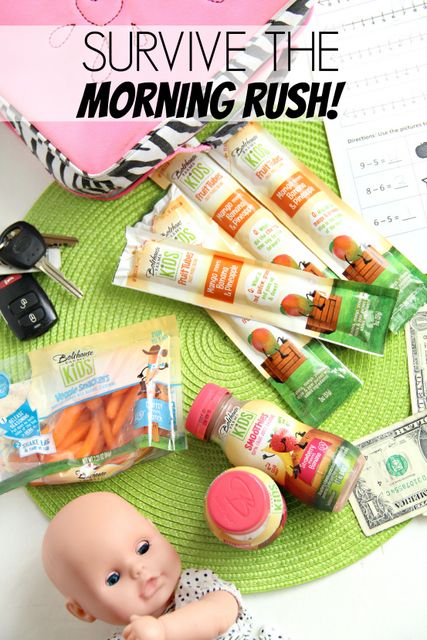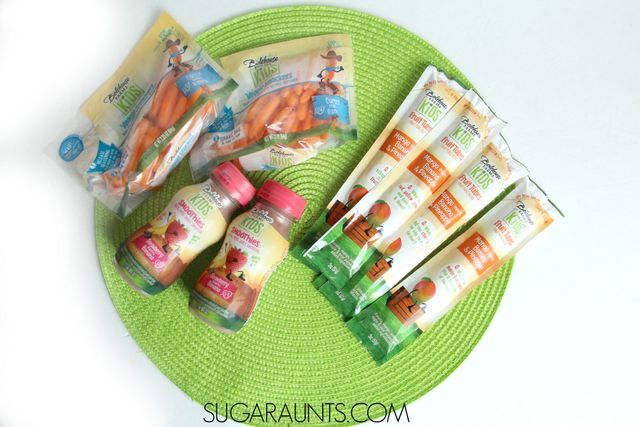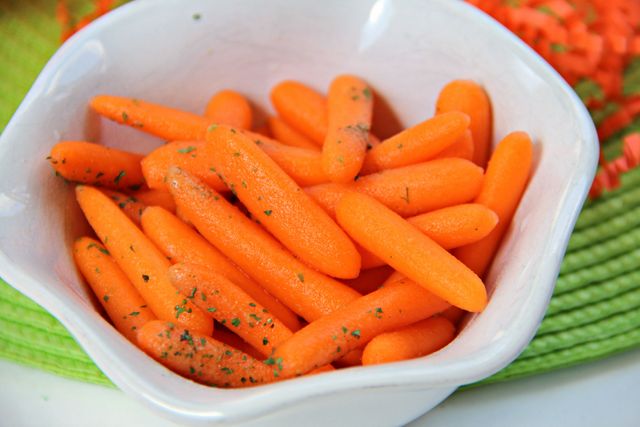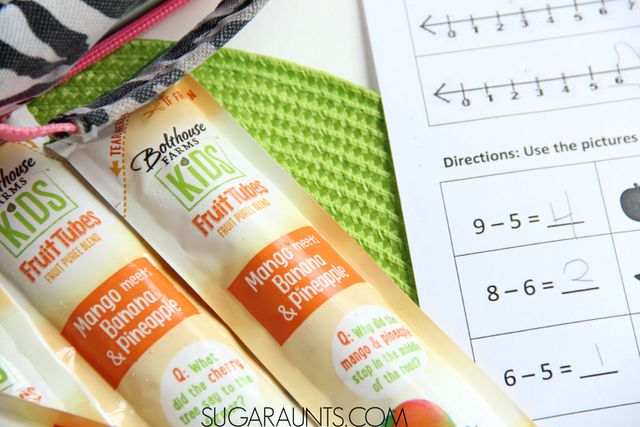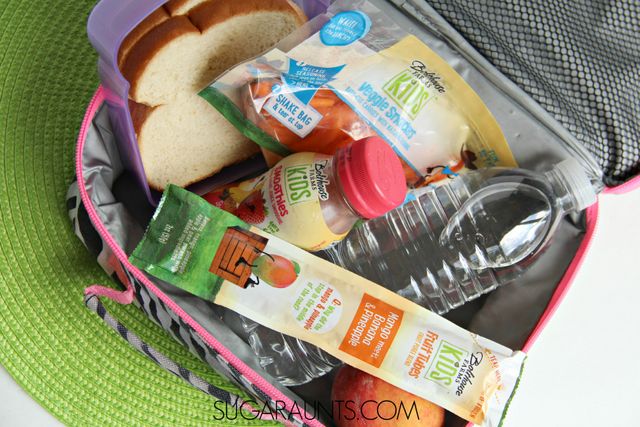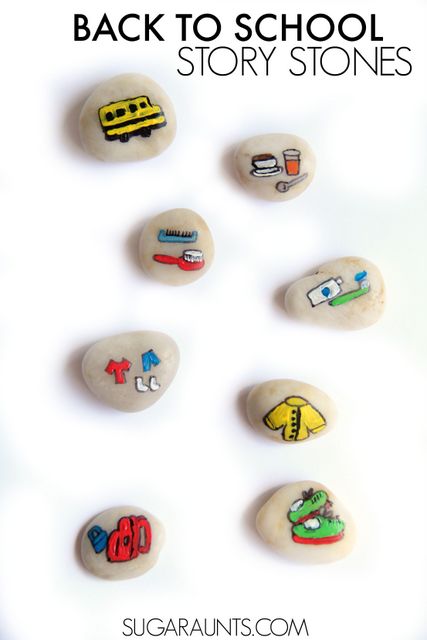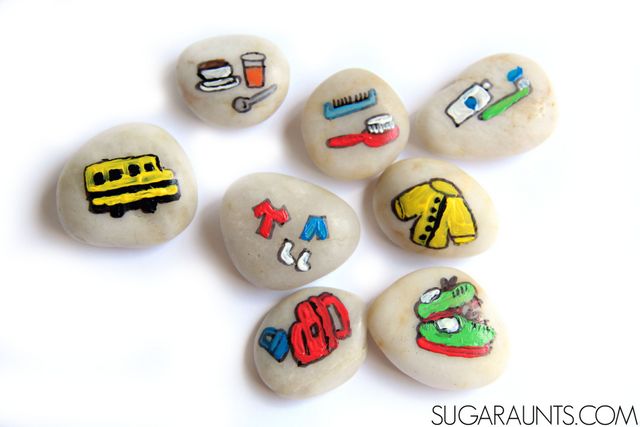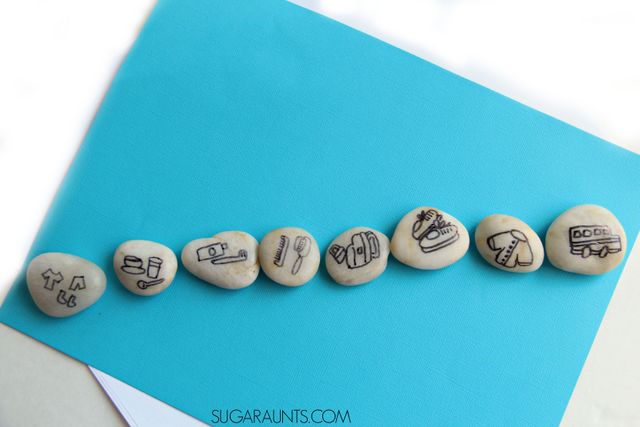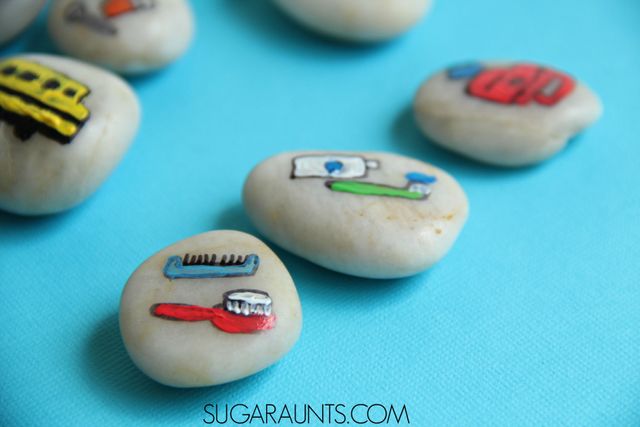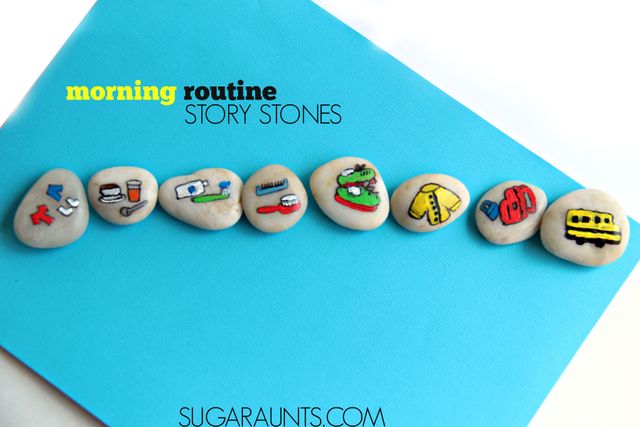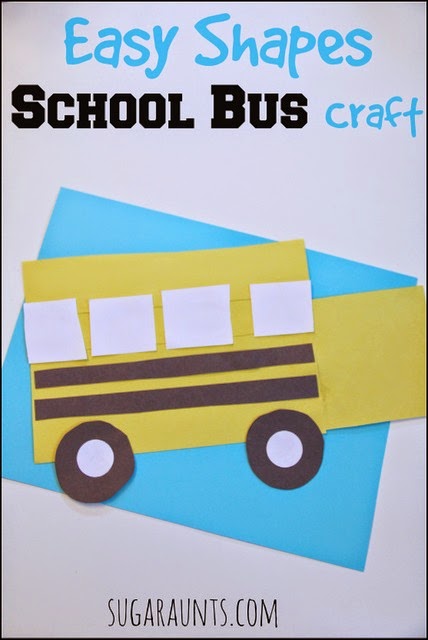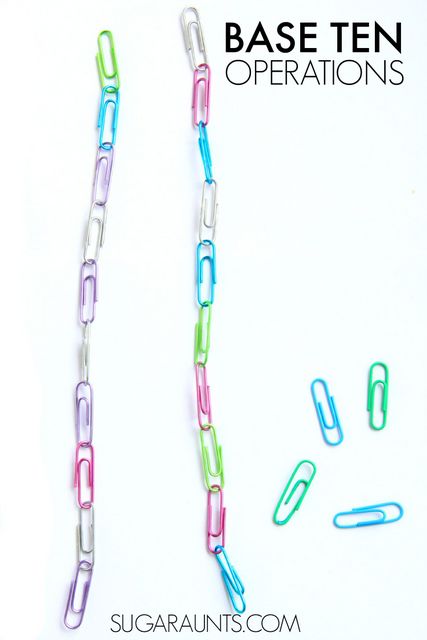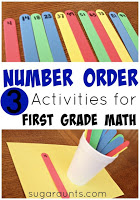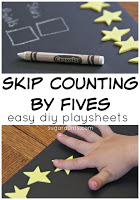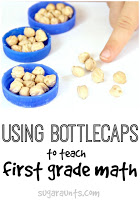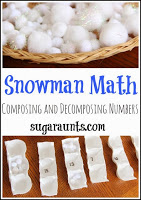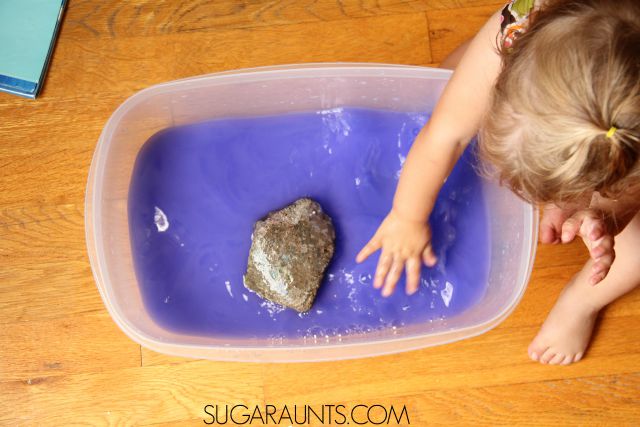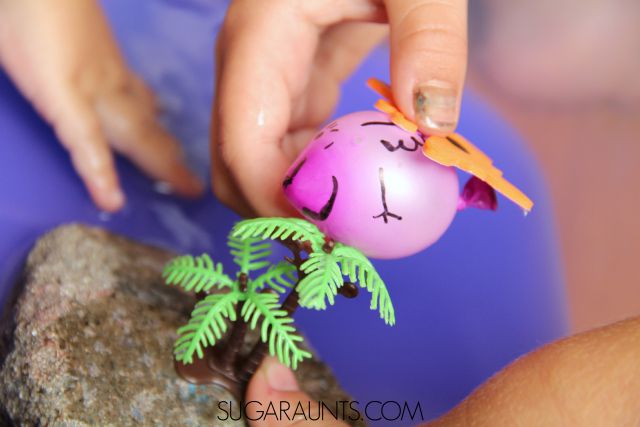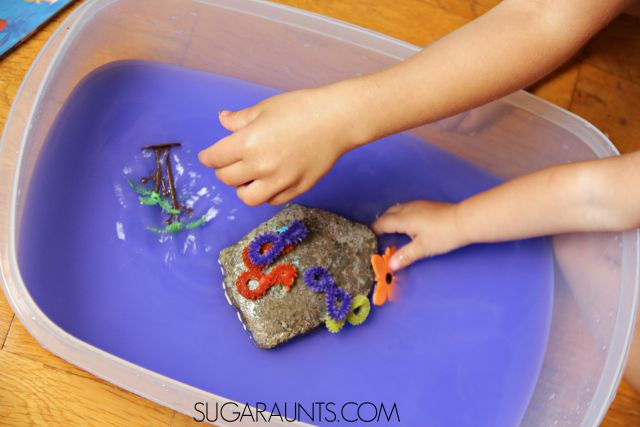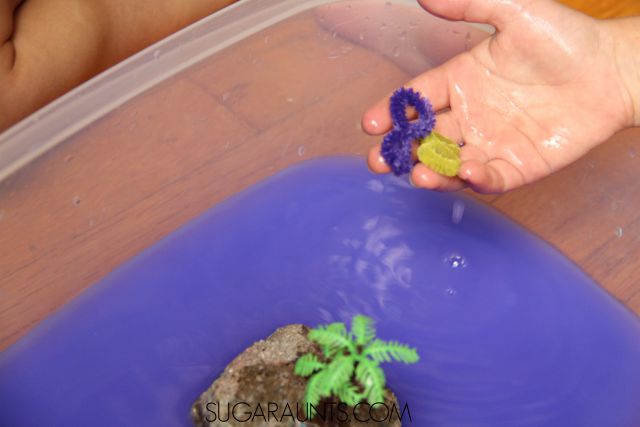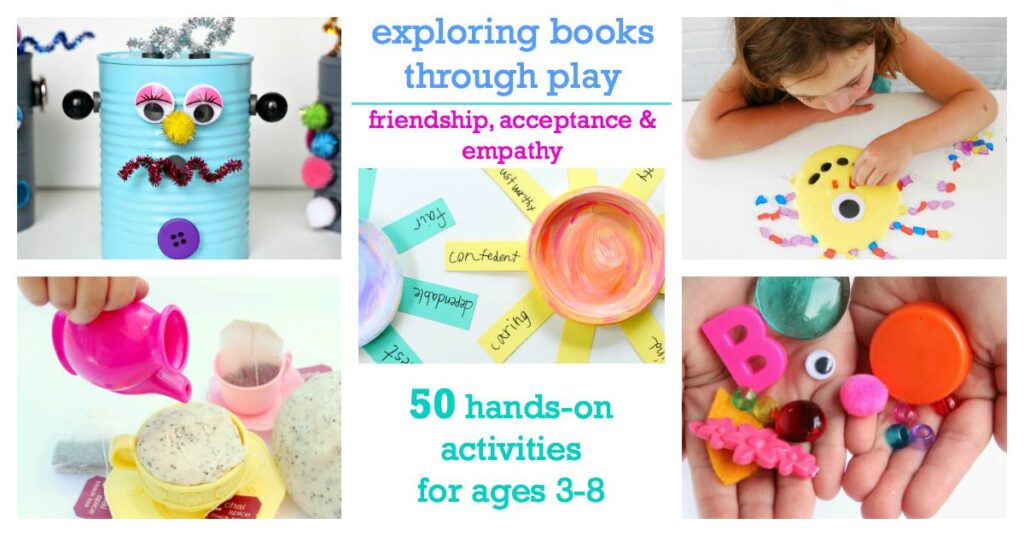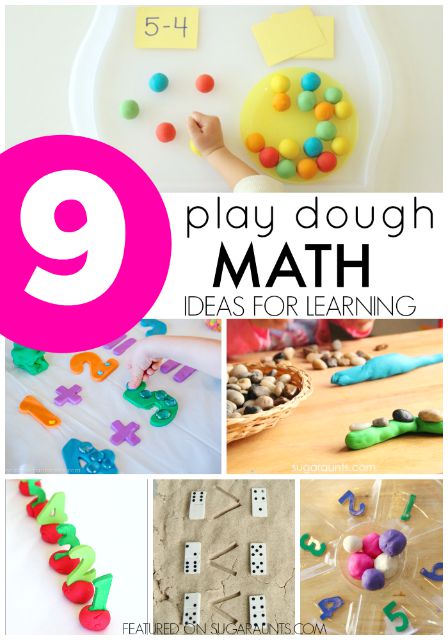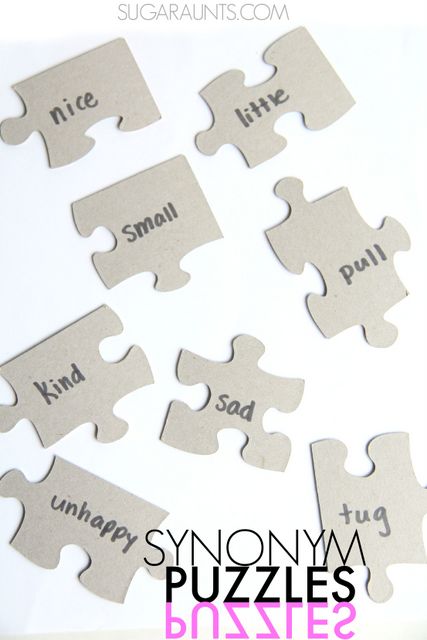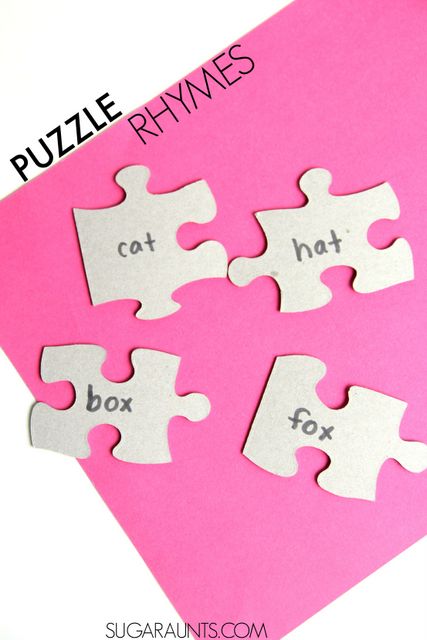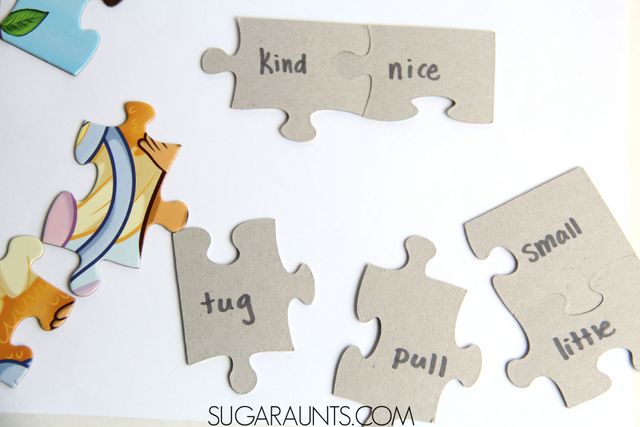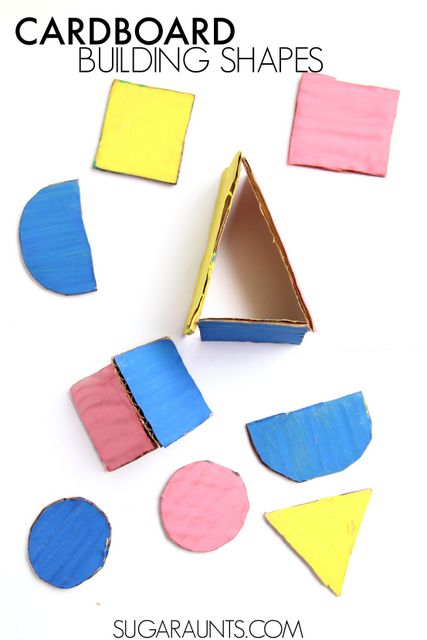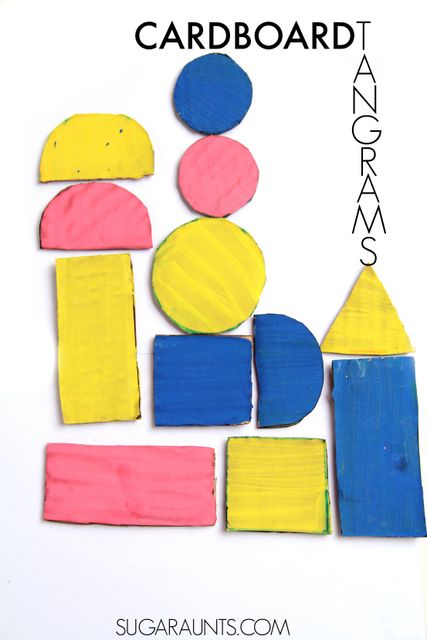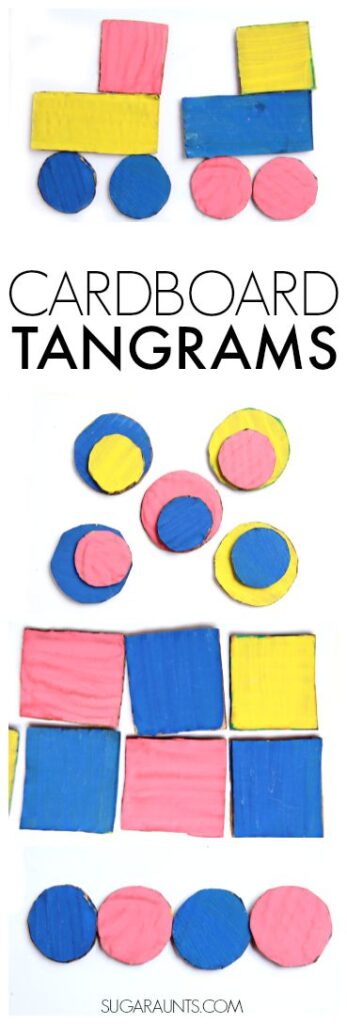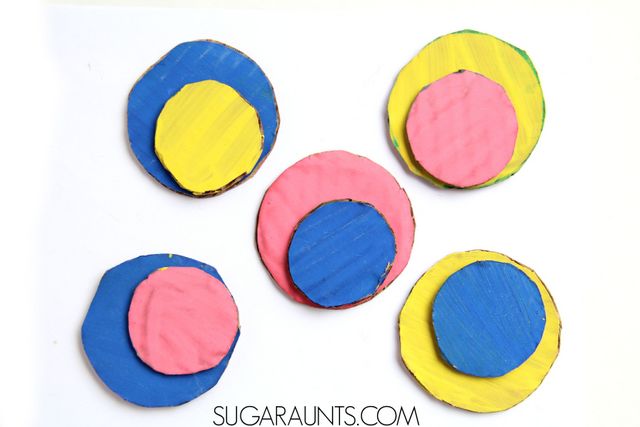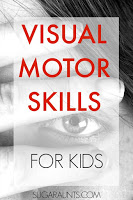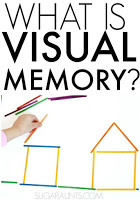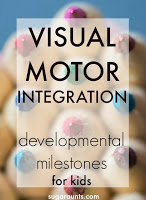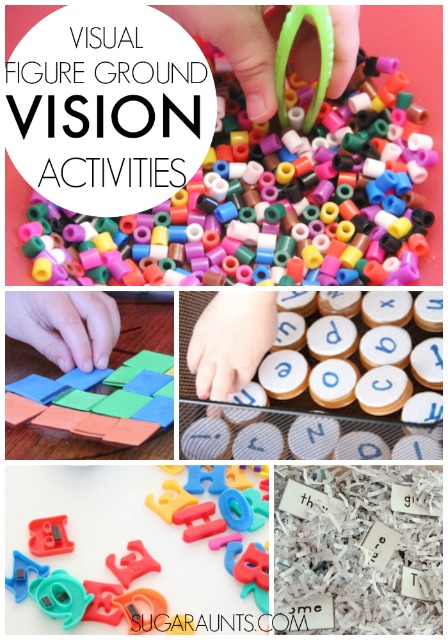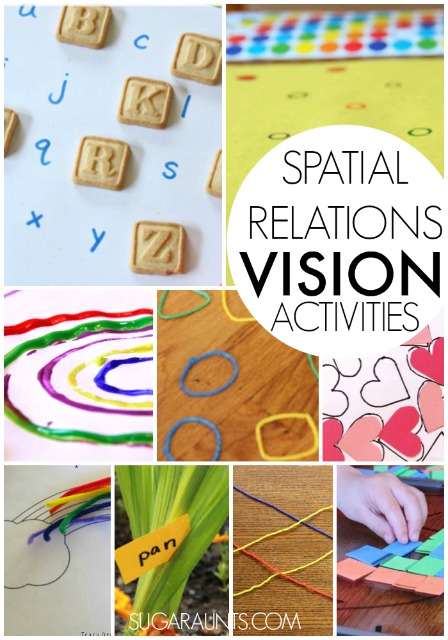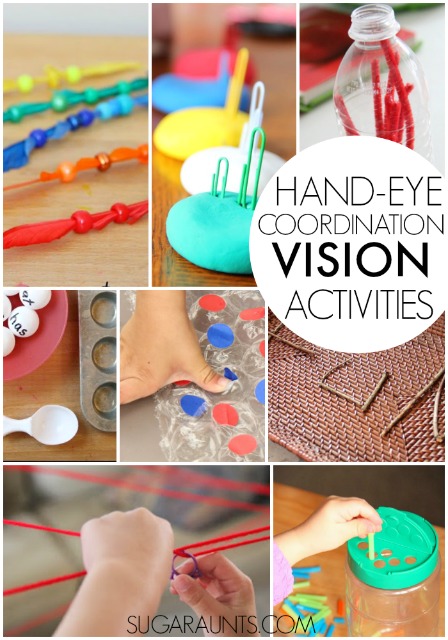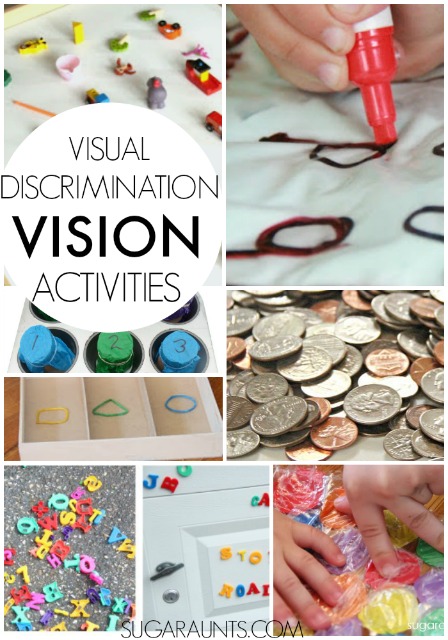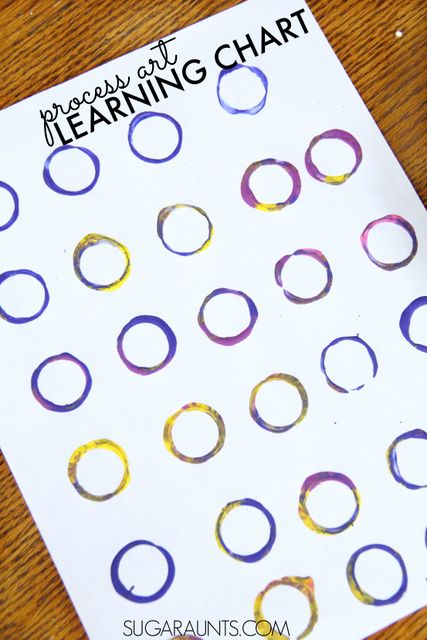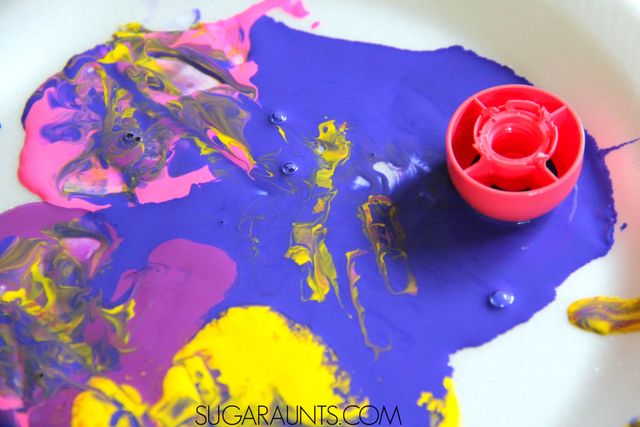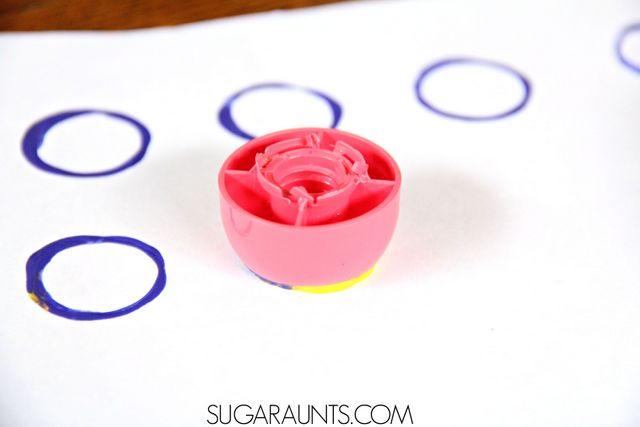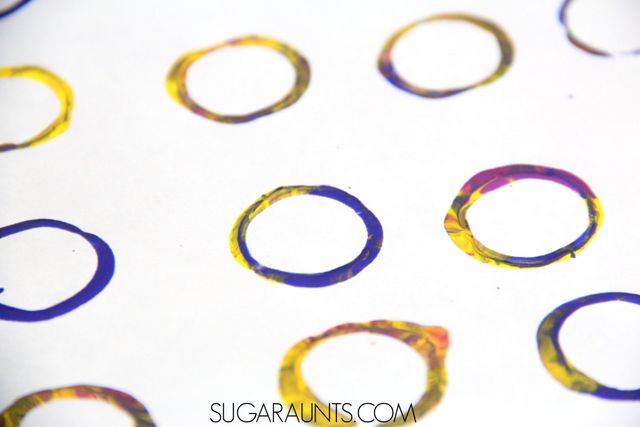From the book, “Pop! Squirt! Splash!”:
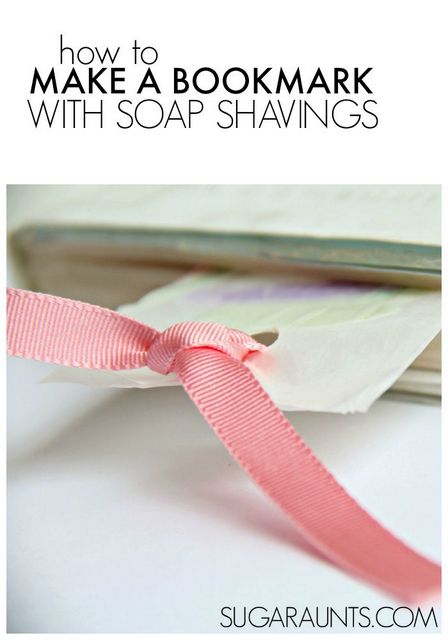
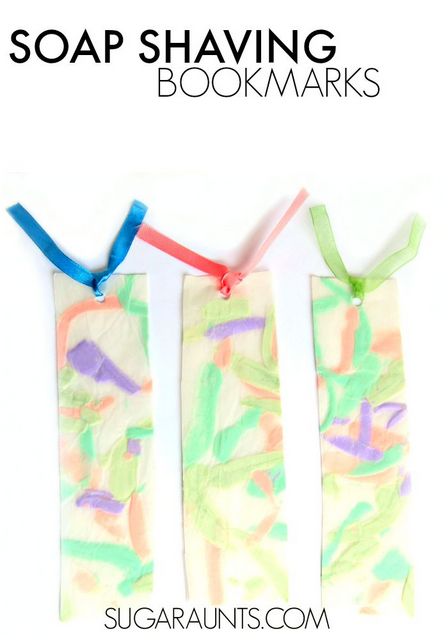
To make Soap Shaving Bookmarks:
You’ll need a few materials:
Bars of soap in several colors
vegetable peeler
Two sheets of Wax Paper
Iron
Dish Towel
Hole Punch
Ribbon
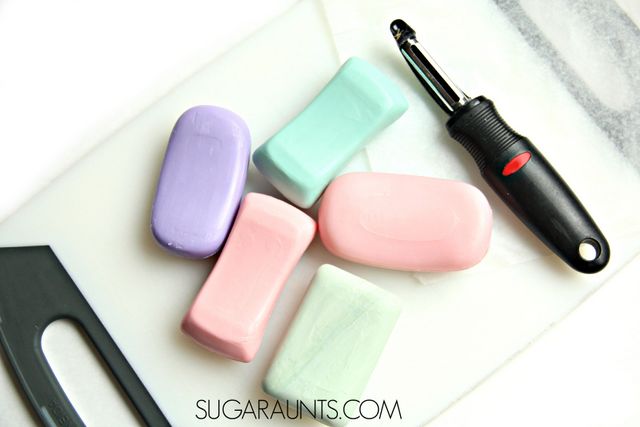
This soap craft is as beautiful as it is simple. Kids will love to use a vegetable peeler on bars of soap to create soap shavings. To make the bookmarks, lay a sheet of wax paper out on a hard surface like a cookie sheet or cutting board.
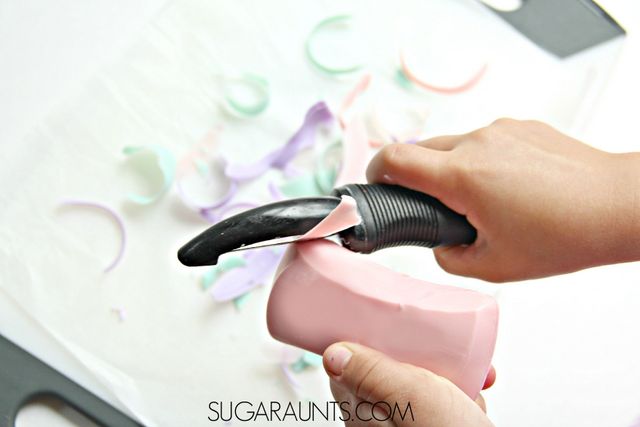
Show your child how to grasp a bar of soap and using hand-over-hand guidance, help your child to slowly peel shavings from the bar of soap. Encourage them to peel away from their body for safety.
Peel long strips of soap and small shavings, mixing the colors of the different bars of soap on the wax paper. Managing the vegetable peeler and the soap is a great way to encourage bilateral hand coordination (the use of two hands together in a coordinated manner).
Children need bilateral hand coordination for functional skills like cutting with scissors, handwriting, tying shoes, and managing clothing fasteners. An activity like using a vegetable peeler on a soft bar of soap is a great way to work on using tow hands together effectively with a non-dominant assisting hand and a dominant hand with fluid and controlled motions.
Arrange the soap peelings on the wax paper and place the second piece of wax paper on top. Carefully move the wax paper to an ironing board. Place a dishtowel over the wax paper and using an iron heated to medium, slowly press down. The soap will slightly melt and flatten under the heat. Check often to see if the wax paper is adhering. You can remove the dish towel and carefully heat the edges of the wax paper. Cut the wax paper into rectangular book marks. Punch a hole near the top of the book marks using the hole puncher. Tie a piece of ribbon in the hole. This bookmark will smell great and would make a lovely gift!
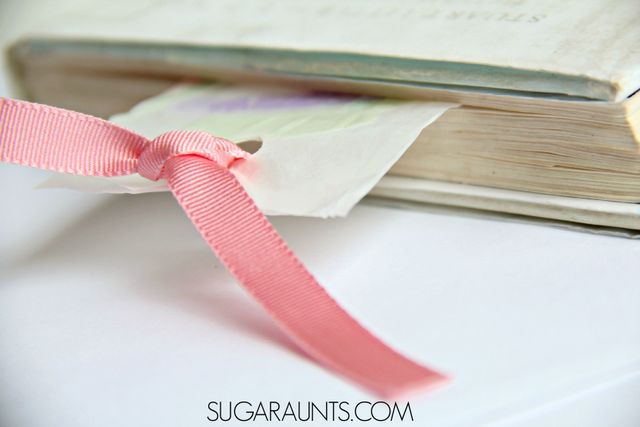
*Note: This craft should be done under close supervision of an adult. Be careful with the use of a vegetable peeler with small children. For younger children, provide hand-over-hand assistance with the vegetable peeler. Adults may want to complete the peeling portion of this soap craft. Adults or responsible older children should manage the iron. As always, use judgement when it comes to completing this and any activity with your kids.
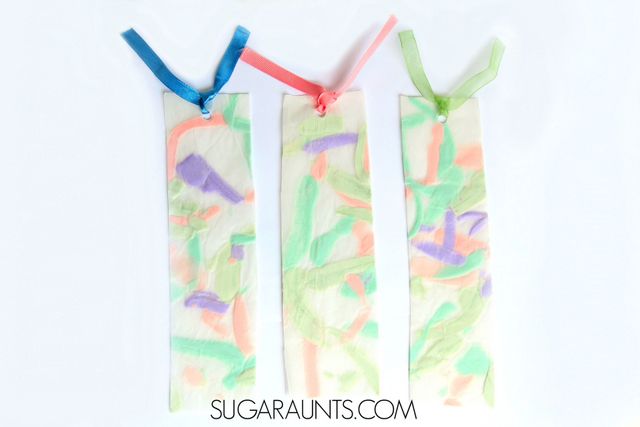
Alternate activities:
Vary the scents and colors of your bookmarks with various soaps.
Add a personal message or quote to the bookmarks.
Add flower petals or scraps of paper to the soap shavings before ironing.
Arrange the soap shavings in a mosaic or mandala pattern.
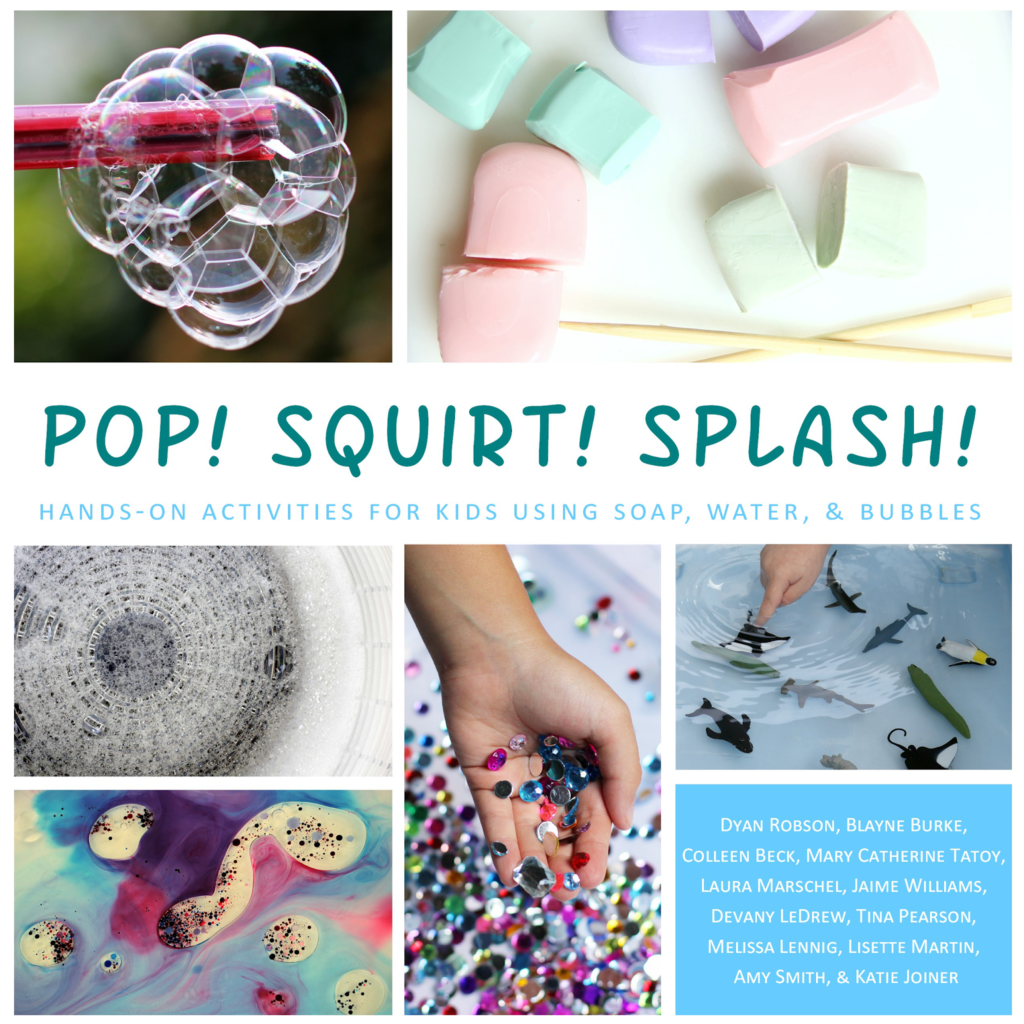
Get your copy of Pop! Squirt! Splash! today.
for $8.99
Buy the Printed version HERE
for $$17.50
Each activity is simple and made up of easy to prepare activities that have been child-tested. You’ll find alternate activities for each idea and ways to extend the play. This book is authored by some of the most creative bloggers out there and will be a hit in your house!
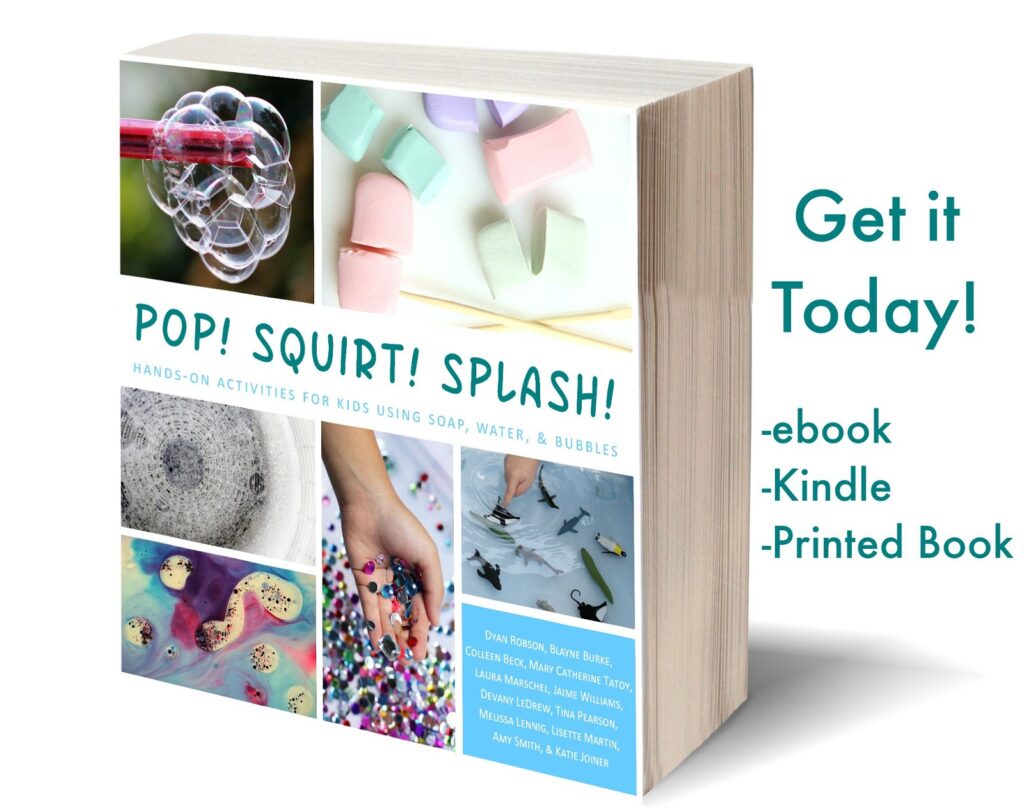
There are so many learning opportunities to be had with just soap, water, or bubbles. It doesn’t have to cost a lot to be a learning idea.
Check out our You Tube video where you can see the book in action!
You can see more water, soap, and bubbles ideas from our co-authors:


